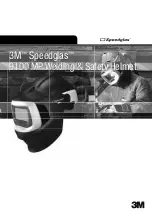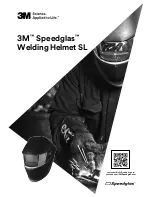
The leading edges are attached to the keel through the two nose plates at the front of the
wing, and via a bolt assembly to the cross bars and the outboard wires. The rear leading
edges fit inside the leading edge tubes, which locate onto a horizontal bolt in the leading
edge assembly. The rear leading edges are a part of the leading edge, but are made in
order that they may be removed for ease of shipping.
3.5.8
Cross Bars
The cross bars are mainly constructed from 7075 aluminum .the cross bars serve the
purpose of holding the leading edges forwards and spread against the sail, they share the
loading with the leading edges during positive and negative flight loads.
The cross bars are attached to each other at the keel using a ball joint that allows relative
movement.
They are also tethered to the keel via a webbing loop. The cross bars are attached to the
leading edges using a bolt assembly. The top and bottom side wires are a part of the
bolting arrangement.
3.5.9
Battens
The battens are mainly constructed from 7075 aluminum. The battens are secured by
batten pockets sewn into the sail. The batten ropes at the trailing edge secure the battens
into their pockets.
The battens help to maintain the profile of the wing during flight, and are important to the
correct and stable operation of the wing.
Do not fly the wing with any other batten profile than that supplied by Air Creation, as
variation may have serious effects on flight performance and stall characteristics of
the wing.
3.5.10 Top and Bottom Side Wires
The bottom side wires are stainless steel braided wires that are attached to the cross bars
and the knuckle at the bottom of the control frame by stainless steel plates, thimbles and
swaged Nicopress sleeves. The top side wires are attached to the kingpost head.
3.5.11 Top and Bottom Front Back Wires
The bottom front back wires are stainless steel braided wires that are attached to the nose
catch, control frame and keel by stainless steel plates, thimbles and swaged Nicopress
sleeves. The top front back wires are attached to the kingpost head.
3.5.12 Reflex Bridles
The reflex bridles are mainly stainless steel wire swaged together using Nicopress sleeves
and attached to the top rear wire via a pulley, and to the sail using shackles.
Reflex bridles produce longitudinal stability when the wing is at zero or negative angles
of attack. The reflex bridles work by preventing the trailing edge of the wing from
moving downward, as they are tethered to the king post assembly. When the wing has
any negative load on the top surface the rest of the lifting surface will move downward
relative to the trailing edge, effectively creating elevator type control surfaces that
produce a positive pitching moment, helping to restore level flight.
GDMMIX13-1G Version
0010
8
Summary of Contents for IXess 13
Page 42: ......









































